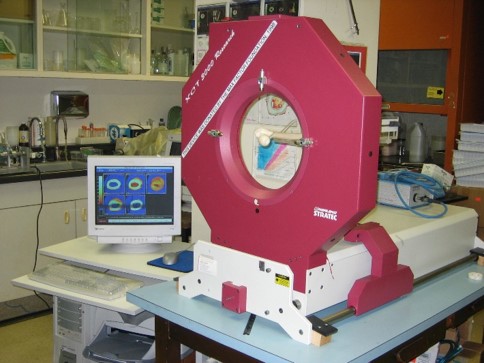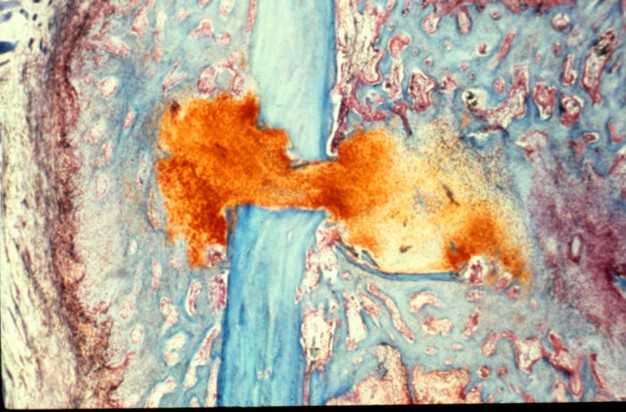The JVL researchers have investigated the effects several variables on fracture healing under carefully controlled laboratory conditions. For example, the difference between allowing axial interfragmentary motion alone or shear (sliding) motion on fracture healing has been studied. As another example, the effect of a step-off in the knee on cartilage pressures and healing was studied. For these studies, an in vivo model was designed and developed to accurately represent and simulate clinical conditions specific to tissue healing.
Methodology
The following methods are routinely used for the evaluation of fracture healing:
Imaging, including x-rays and quantitative computerized tomography (qCT)
Biomechanical testing, using small custom loading apparatuses and multi-axis load frames
Histological evaluation
The effects of blood supply on fracture healing have been evaluated using in vivo models. A Laser Doppler flowmeter was used to measure in vivo blood flow at the fracture site throughout the fracture healing period.
Researchers
Sang-Hyun Park, PhD
Mauricio Silva, MD
Selected Publications
Bálint, L., Park, S. H., Bellyei, Á., Luck Jr, J. V., Sarmiento, A., & Lovász, G. (2005). Repair of steps and gaps in articular fracture models. Clinical Orthopaedics and Related Research®, 430, 208-218.
Park, S. H., O'connor, K., Sung, R., McKellop, H., & Sarmiento, A. (1999). Comparison of healing process in open osteotomy model and closed fracture model. Journal of Orthopaedic Trauma, 13(2), 114-120.
Park, S. H., O'Connor, K. I. M., McKellop, H., & Sarmiento, A. (1998). The influence of active shear or compressive motion on fracture-healing. Journal of Bone and Joint Surgery, 80(6), 868-78.
Sarmiento, A., McKellop, H. A., Llinas, A., Park, S. H., Lu, B., Stetson, W., & Rao, R. (1996). Effect of loading and fracture motions on diaphyseal tibial fractures. Journal of Orthopaedic Research, 14(1), 80-84.
Park, S. H., Cassim, A., Llinas, A., McKellop, H. A., & Sarmiento, A. (1994). Technique for producing controlled closed fractures in a rabbit model. Journal of Orthopaedic Research, 12(5), 732-736.









